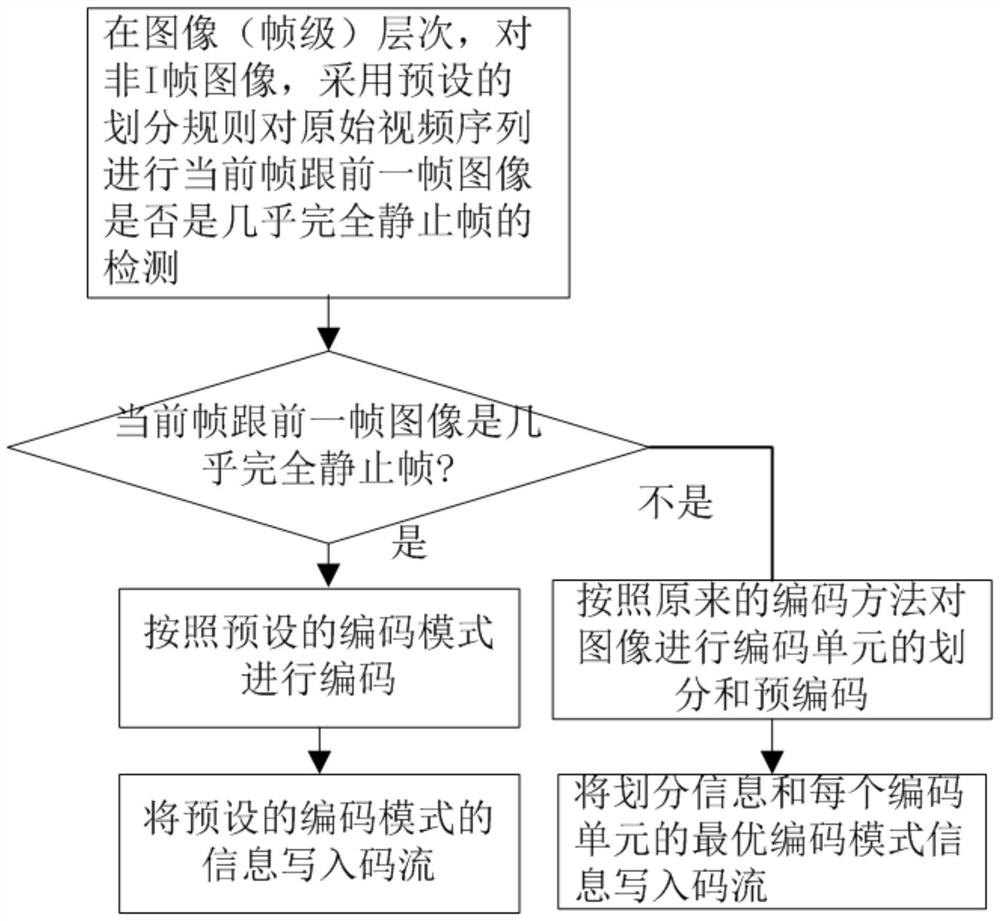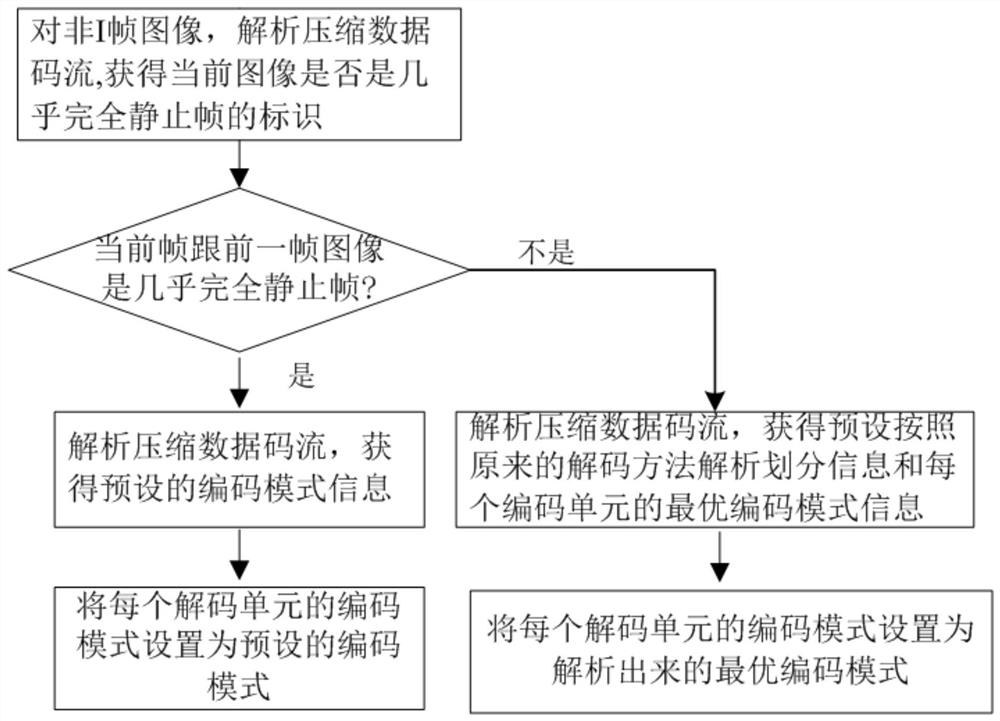High-efficiency non-I-frame image encoding and decoding method
A technology of encoding method and decoding method, applied in the field of data compression, can solve the problems of increasing the complexity of encoding and decoding, unoptimized processing, etc., and achieve the effect of reducing the complexity of encoding and decoding
- Summary
- Abstract
- Description
- Claims
- Application Information
AI Technical Summary
Problems solved by technology
Method used
Image
Examples
Embodiment 1
[0047] Among them, the encoding method steps are as follows:
[0048] Step 1: At the image (frame level) level, for non-I-frame images, use the following preset division rules and sub-steps to detect the original video sequence. If it is detected that the current frame and the previous frame are almost completely still frames (that is, "approximately still frames"), set the flag pic_is_still_flag to true, otherwise set pic_is_still_flag to false, and write the flag to the code stream:
[0049] Sub-step 1: Calculate the sum of the absolute value of the pixel difference between the current coded image and the previous frame image at the same position, which is recorded as totalPixelDiff;
[0050] Sub-step 2: Calculate the total number of pixels of the current coded image, denoted as totalPixelNO;
[0051] Sub-step 3: According to the ratio of totalPixelDiff to totalPixelNO, when the ratio is less than or equal to the threshold A, the current coded image is set as an almost comp...
Embodiment 2
[0073] Among them, the encoding method steps are as follows:
[0074] Step 1: At the image (frame level) level, for non-I-frame images, use the following preset division rules and sub-steps to detect the original video sequence. If it is detected that the current frame and the previous frame are almost completely still frames, set the flag such as pic_is_still_flag to true, otherwise set pic_is_still_flag to false, and write the flag to the code stream:
[0075] Sub-step 1: In units of fixed-size blocks, calculate the number of blocks whose total difference between the current coded image and the pixels at the same position of the previous frame image is zero, denoted as zeroBlockNO;
[0076] Sub-step 2: Calculate the total number of blocks of the current encoded image with a fixed size, denoted as totalBlockNO;
[0077] Sub-step 3: According to the percentage of totalBlockNO that zeroBlockNO occupies, when the ratio is greater than or equal to threshold B, the current coded ...
PUM
 Login to View More
Login to View More Abstract
Description
Claims
Application Information
 Login to View More
Login to View More - R&D
- Intellectual Property
- Life Sciences
- Materials
- Tech Scout
- Unparalleled Data Quality
- Higher Quality Content
- 60% Fewer Hallucinations
Browse by: Latest US Patents, China's latest patents, Technical Efficacy Thesaurus, Application Domain, Technology Topic, Popular Technical Reports.
© 2025 PatSnap. All rights reserved.Legal|Privacy policy|Modern Slavery Act Transparency Statement|Sitemap|About US| Contact US: help@patsnap.com


